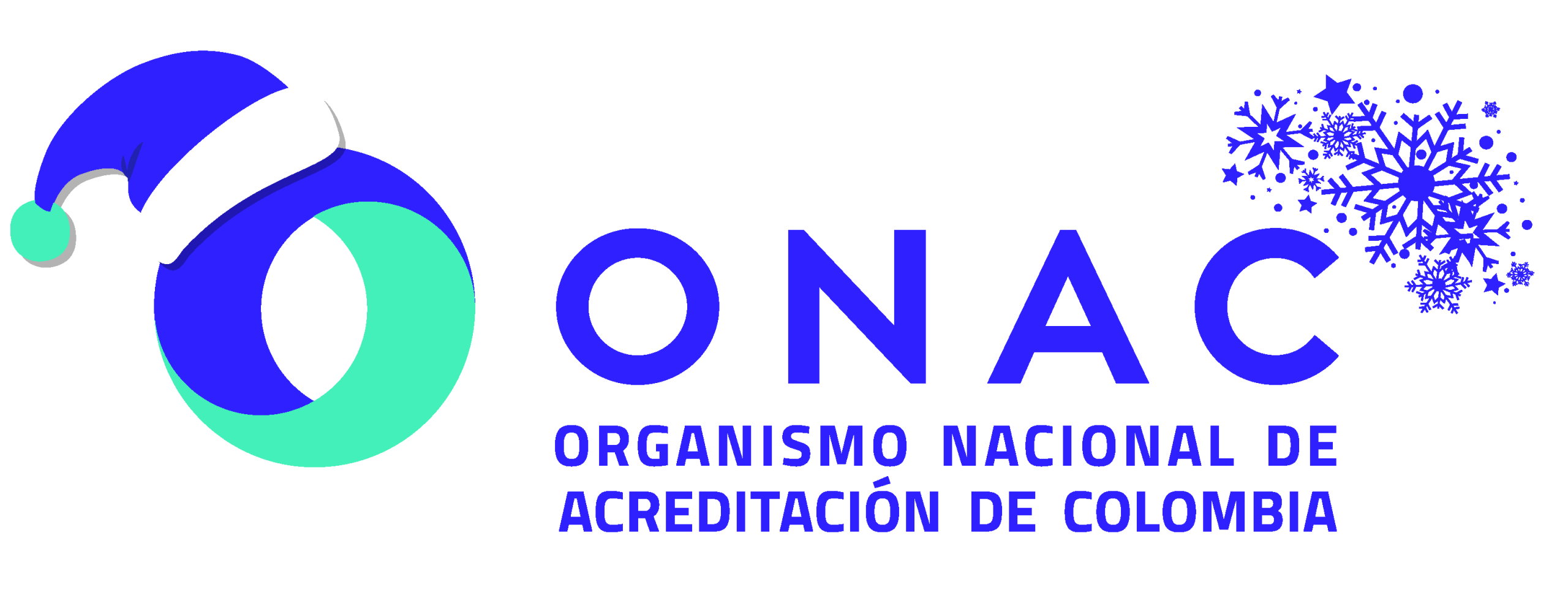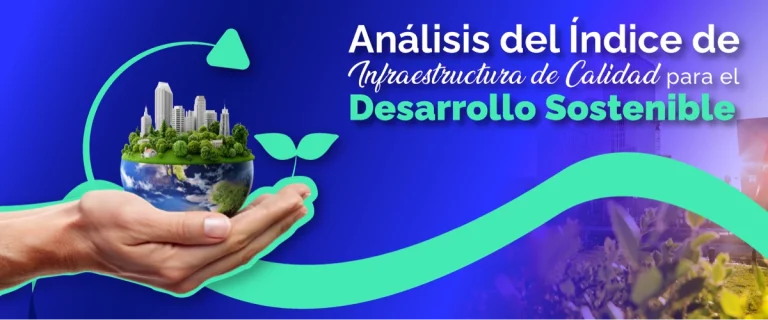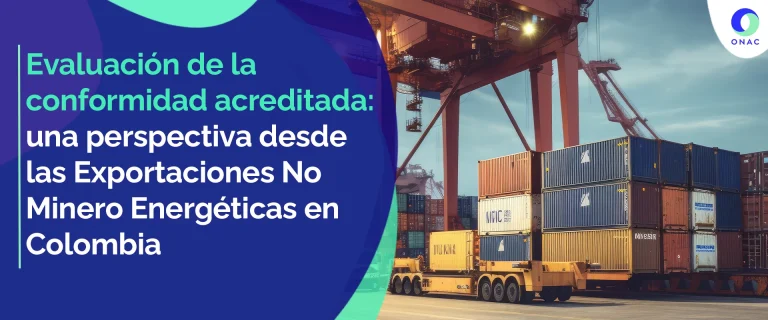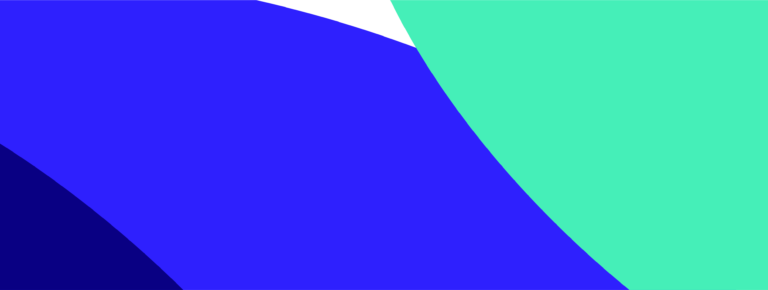Economic and Social Research Coordination for Quality Infrastructure, Organismo Nacional de Acreditación de Colombia – ONAC
Abstract
The document analyzes the market for accreditation services in the ISO 21.001 of 2018: Management Systems for Educational Organizations. It names the main Conformity Assessment Bodies (CABs) that offer such certification in the country, however it is clarified that the CABs that currently have accreditation in Product Certification in the educational field are potentially the most interested in this accreditation since they would only have to expand their accreditation scheme. The study suggests that, although certification has important benefits in terms of quality and operational efficiency, reputation, international credibility and alignment with the SDGs, the incentives provided by regulators may be weak and not enough to drive the adoption of the standard.
Background
The Colombian Institute of Technical Standards and Certification (ICONTEC) requested the National Accreditation Body of Colombia (ONAC) to develop accreditation services in ISO 21001:2018 corresponding to Management Systems for Educational Organizations.
Objective
The objective of this document is to conduct a market study of accreditation services in ISO 21001:2018: Management Systems for Educational Organizations
Scope
This document presents the particularities of the education sector in Colombia, an overview of its conformation and the certification market in ISO 21001:2018. It also specifies the CBAs that currently offer this certification, if they are accredited and the incentives they would have to become accredited. Based on the above, it presents some conclusions.
1. Introduction
In an increasingly globalized and competitive educational environment, quality and international recognition have become fundamental pillars for educational institutions. In this context, the present market study aims to explore the feasibility and potential of introducing accreditation services in the Management Systems Certification scheme under ISO 21001 in Colombia, focusing on organizations dedicated to the certification of people.
Initially, the study analyzes the Colombian educational system, from initial education to higher education. It examines the current structure, the geographical distribution of institutions and recent trends, providing a comprehensive view of the educational landscape in the country.
In the second part, the importance of ISO 21001:2018 for educational institutions is emphasized, highlighting how this standard provides an international framework for improving and ensuring quality in education. The benefits of its implementation are discussed, including improved coordination and communication, focus on student needs, and increased credibility and reputation of institutions.
Subsequently, the market for Conformity Assessment Bodies offering ISO 21001:2018 certification is studied, and an analysis of the CABs that might be most interested in acquiring accreditation with ONAC is made.
The study aims to provide a solid basis and relevant data to make informed decisions on the introduction of accreditation services under ISO 21001 in Colombia, thus contributing to the advancement and international recognition of educational institutions and certifying bodies in the country.
2. Education system in Colombia
The Colombian education system consists of early education, preschool education, basic education (primary five grades and secondary four grades), middle education (two grades and culminates with a bachelor’s degree), and higher education.
In this context, at the end of 2021 there were approximately 18,000 educational establishments in the country, 361 of them corresponding to higher education institutions and the remaining (more than 17,000 establishments) to preschool, elementary and middle school institutions.
As for establishments providing non-higher education services, in the last 4 years there has been a decrease of 11%, reaching 17,349 by 2021.
Illustration 1 Evolution of the number of educational establishments between 2018 and 2021
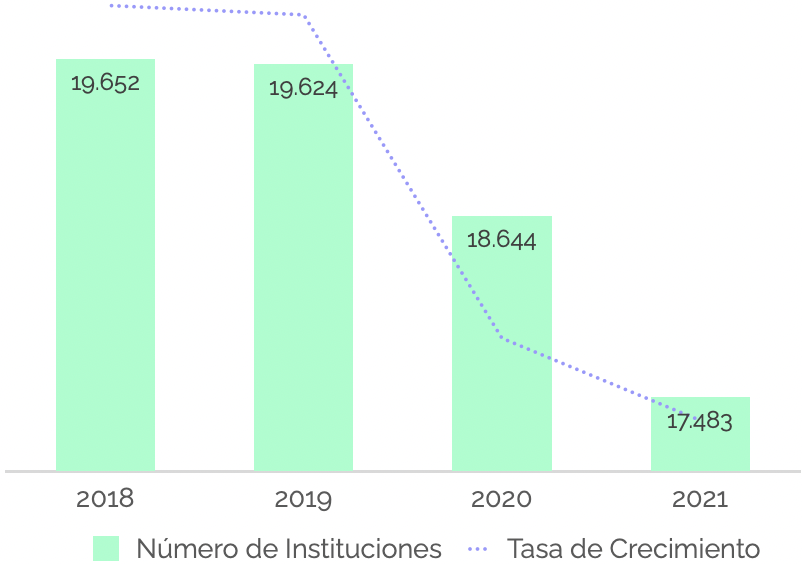
Source: Datos Abiertos – Ministerio de Educación Nacional
These establishments can be divided into educational institutions and educational centers. Educational institutions guarantee all compulsory grades, from transition to ninth grade, with the possibility of offering middle school grades (tenth and eleventh) and preschool grades. On the contrary, educational centers are those that do not offer all grades between transition and ninth grade.
In this context, educational institutions offering secondary education degrees can be categorized as academic or technical. Academic institutions offer in-depth study in a specific field of interest to the student, while technical institutions prepare students for work in one of the productive sectors. The distribution of educational establishments according to the types of secondary education is shown below.
Illustration 2 Distribution of educational establishments according to types of education in 2021.
Source: Datos Abiertos – Ministerio de Educación Nacional* 4
* Institutions belonging to the “Not Applicable” category are those that do not have a high school education and therefore cannot be categorized as academic or technical.
Likewise, these establishments can be categorized into official, i.e., those financed by state resources, and non-official, i.e., those financed with third-party resources. The breakdown of official and non-official institutions that are registered in each of the most significant departments (those with the largest number of institutions) is shown below.
Illustration 3 Distribution of official and non-official establishments in the departments with the largest number of establishments in 2021.
Source: Datos Abiertos – Ministerio de Educación Nacional
From this information it is possible to observe that the departments with the highest concentration of non-higher education establishments are Bogotá, Antioquia, Valle del Cauca and Cundinamarca (for more information, see Annex 1). This information is consistent with the data on enrolled students obtained by DANE (2022), which concludes that the departments with the highest number of enrolled students are the same departments with the highest concentration of educational offerings, i.e., Bogota and Antioquia.
On the other hand, higher education is offered by Higher Education Institutions (HEIs). These can be classified according to their academic character into:
- Professional Technical Institutions
- Technological Institutions
- University Institutions or Technological Schools
- Universities
There are currently 361 institutions of higher education in the country, distributed according to their academic nature as follows:
Illustration 4 Distribution of HEIs according to their academic character for the first semester of 2022.
Source: Datos Abiertos – Ministerio de Educación Nacional
Similar to non-higher education institutions, HEIs are more concentrated in the central areas of the country, most of them in Bogota. Below is the distribution of HEIs in the most significant departments, i.e., those with the largest number of higher education institutions (for more information, see Annex 2).
Illustration 5: Distribution of HEIs in the most significant departments in the first half of 2022.
Source: Datos Abiertos – Ministerio de Educación Nacional
3. Analysis of the ISO 21001:2019 certification market
3.1. Relevance of certification
ISO 21001:2018 certification is of great importance to educational institutions as it provides an international framework for improving and ensuring quality in education. This standard, which is aligned with ISO 9001 standards, is designed specifically for the education sector and covers various aspects of the education service, from management to education delivery.
Key benefits of implementing ISO 21001:2018 in educational institutions include:
- Improved Coordination and Communication: Helps to improve the coordination of educational processes and the alignment of the organization’s mission, vision, objectives and action plans, facilitating better communication among all stakeholders.
- Focus on Student Needs: The standard focuses on the actual learning needs and requirements of students, ensuring the development of appropriate educational content and offerings, and the effective assessment of outcomes.
- Alignment of Objectives and Activities with Policy: Helps educational institutions align their objectives and activities with their policy, mission and vision, leading to greater efficiency and effectiveness in their operations.
- Increased Social Responsibility: Promotes inclusive and equitable quality education, ensuring that all students’ needs are met, including those with special educational needs.
- Continuous Improvement: Includes a process of continuous improvement based on the analysis and evaluation of information to generate optimal levels of performance, which contributes to the overall efficiency and effectiveness of the institution.
- Increased Credibility and Reputation: Certification under this standard can significantly enhance the institution’s credibility and reputation, demonstrating its commitment to effective educational management practices and a culture for organizational improvement.
- International Harmonization: Facilitates harmonization of educational standards at regional, national and international levels, which is especially beneficial for institutions collaborating in knowledge-sharing projects.
- Structured Implementation: To implement ISO 21001, institutions must follow a structured process that includes management commitment, establishing a project team, analyzing the needs of students and other stakeholders, and implementing processes to ensure educational quality.
In addition, ISO 21001:2018 certification contributes to the fulfillment of Sustainable Development Goal (SDG) number 4, which focuses on ensuring inclusive and equitable quality education and promoting lifelong learning opportunities for all. By implementing this standard, educational institutions reinforce their commitment to inclusive and equitable education, thus ensuring that all students, regardless of their background or needs, have access to high-quality education. This focus on equality and inclusion is fundamental to achieving the global sustainable development goals and building a more just and equitable society.
In summary, ISO 21001:2018 certification is a key tool for educational institutions seeking to improve their educational quality and student satisfaction, align their objectives with their policy and improve their efficiency in the delivery of educational services.
3.2. Market of Conformity Assessment Bodies potentially interested in acquiring ISO 21001:2018 accreditation with ONAC
Considering that some CBAs currently offer ISO 21001 certification services without the corresponding accreditation or accreditation from an international accreditation body, some of them may be interested in acquiring accreditation with ONAC to reinforce their legitimacy and recognition in the market.
The inclusion of ONAC as an accreditation option would provide these CBAs with added value in terms of credibility and recognition in the local and international market. In addition, aligning with a national body such as ONAC could facilitate integration and compliance with local regulations and standards.
Furthermore, the market of CBAs potentially interested in acquiring accreditation with ONAC would also include CBAs specialized in product certification in the field of education (IAF code 37). For them, accreditation in ISO 21001 is not only feasible but strategically advantageous, as they can extend the scope of their existing accreditation. This would allow them to diversify their services and improve their competitiveness in the market, while reducing costs and time in the accreditation process as it is an extension of scope.
Similarly, there are some Conformity Assessment Bodies that are accredited by ONAC in Management Systems and offer certification in the standard NTC 5555 – Quality Management Systems for Work Training Institutions. These bodies, as well as those accredited in product certification in the field of education, may potentially be interested in expanding their scope of accreditation to include accreditation to ISO 21001.
3.3. Market of individual certifying bodies
The market is not only limited to educational institutions, given the current demands in specific training, the Individual Certifying Bodies (ICBs) play a crucial role. These bodies, governed by the ISO/IEC 17024 standard, offer a guarantee of competence in various activities and economic sectors. Accreditation under this standard is a globally recognized seal of confidence, providing credibility to both the certificates issued and the people who hold them. However, in an increasingly competitive market and with a growing demand for quality in education and training, certification under ISO 21001:2018 emerges as a strategic opportunity for these bodies.
The ISO 21001:2018 standard, specific for management systems in educational organizations, presents an opportunity for ICBs. Through this accreditation, these bodies can demonstrate not only their ability to assess competencies but also their commitment to educational quality and continuous improvement in their training processes. Some of the areas in which they can take advantage are:
- Educational Quality Assurance: ISO 21001 helps agencies establish a framework for the effective delivery of education and training programs, ensuring that these programs are consistent, high quality and focused on learning.
- Focus on Learner Needs: This standard emphasizes the importance of focusing on the needs and expectations of learners, which is crucial for bodies that certify professional competencies. It ensures that training programs are designed to meet the demands of today’s labor market.
- Continuous Improvement and Operational Effectiveness: The adoption of ISO 21001 encourages continuous improvement and efficiency in the management and operation of certification bodies, which can translate into greater customer satisfaction and improved organizational performance.
- Credibility and International Recognition: Accreditation under ISO 21001 raises the prestige and credibility of a certifying body at international level, which can be a key differentiating factor in a globalized market.
With the above, it is intended to expose a possible interest on the part of the OECs currently accredited under ISO/IEC 17024, to access certification under ISO 21001, which can reinforce the intention of the CABs to obtain the accreditation.
4. Conclusions and recommendations
Quality in educational management is a determining factor for the effective development of human capital. ISO 21001 certification guarantees quality in educational processes, aligning them with this objective. The accreditation of Conformity Assessment Bodies plays a crucial role, ensuring that certifiers perform their practices with high technical competence, consistency and objectivity. This is fundamental for the correct auditing of the certification requirements set out in the standard.
Market Opportunities:
- Quality Improvement and Operational Efficiency: ISO 21001 certification is crucial for improving educational quality in educational institutions. This standard provides a framework for optimizing educational processes and practices, resulting in greater operational efficiency.
- International Reputation and Credibility: The adoption of ISO 21001 can significantly enhance the reputation and credibility of an educational institution internationally, which in turn can open up new opportunities for collaboration and expansion.
- Alignment with Sustainable Development Goals: ISO 21001 certification promotes improvements in educational management that are aligned with ensuring quality education that promotes inclusion and equity.
- Expanded Scope for CABs: CABs can take advantage of ISO 21001 certification to expand their services in the field of education, thus diversifying their offerings and improving their market position.
Limitations and Challenges:
- Lack of market dynamism: Despite the potential, the ISO 21001 accreditation market may be limited in Colombia. This could be related to the lack of specific incentives by the Ministry of Education and a reduced perception of its relevance in the bulk of educational institutions.
- Absence of information on the perception of the CABs: there is no information that allows knowing the perception of the CABs on the relevance of this accreditation in their business scheme.
Possible Barriers to Adoption:
- Lack of Recognition and Cost Perception: The lack of recognition of the standard by educational authorities, coupled with the perceived costs and complexity of implementation, could represent significant barriers to its wider adoption.
In summary, the study indicates that there is an opportunity for the expansion and adoption of ISO 21001 in Colombia, benefiting both certifying bodies and educational institutions, and contributing to the advancement and international recognition of the Colombian education sector. Regarding the accreditation of Conformity Assessment Bodies, there is a potential for expanding the scope of the bodies that already have management system accreditation. Regarding conformity assessment bodies that already offer certification in Colombia, there are some that have accreditation from other countries and others that do not have accreditation. In the latter, there is an important challenge for them to see this accreditation as relevant in their business scheme.
Annexes
Annex 1 Number of official and non-official educational establishments by department
Department | Number of establishments | ||
Official | Non-Official | Total | |
Bogotá D.C. | 1595 | 394 | 1989 |
Antioquia | 683 | 960 | 1643 |
Valle Del Cauca | 1132 | 377 | 1509 |
Cundinamarca | 839 | 358 | 1197 |
Atlántico | 711 | 289 | 1000 |
Nariño | 173 | 775 | 948 |
Santander | 537 | 391 | 928 |
Cauca | 170 | 588 | 758 |
Bolívar | 333 | 346 | 679 |
Córdoba | 201 | 444 | 645 |
Boyacá | 298 | 297 | 595 |
Tolima | 273 | 271 | 544 |
Magdalena | 305 | 234 | 539 |
Norte de Santander | 271 | 266 | 537 |
Cesar | 259 | 224 | 483 |
Sucre | 136 | 303 | 439 |
Huila | 197 | 225 | 422 |
Meta | 229 | 187 | 416 |
Risaralda | 207 | 157 | 364 |
Caldas | 113 | 210 | 323 |
Guajira | 116 | 178 | 294 |
Chocó | 18 | 207 | 225 |
Caquetá | 44 | 172 | 216 |
Putumayo | 25 | 148 | 173 |
Casanare | 60 | 93 | 153 |
Quindío | 51 | 83 | 134 |
Arauca | 35 | 63 | 98 |
Amazonas | 6 | 53 | 59 |
Vichada | 3 | 55 | 58 |
Guaviare | 12 | 43 | 55 |
Guainía | 2 | 21 | 23 |
Archipiélago de San Andrés, Providencia y Santa Catalina | 9 | 11 | 20 |
Vaupés | 1 | 16 | 17 |
Total general | 9044 | 8439 | 17483 |
Fuente: Datos Abiertos – Ministerio de Educación Nacional
Annex 2 Number of Higher Education Institutions by department
Department | Professional Technical Institutions | Technological Institutions | University Institutions or Technological Schools | Universities |
Bogotá D.C. | 12 | 18 | 61 | 31 |
Antioquia | 1 | 8 | 26 | 18 |
Valle del Cauca | 7 | 6 | 9 | 15 |
Santander | 1 | 4 | 6 | 10 |
Atlántico | 1 | 3 | 7 | 7 |
Bolívar | 7 | 6 | ||
Cundinamarca | 5 | 1 | 6 | |
Cauca | 1 | 5 | 2 | |
Boyacá | 1 | 6 | ||
Norte de Santander | 2 | 1 | 4 | |
Risaralda | 1 | 3 | 3 | |
Caldas | 1 | 5 | ||
Nariño | 2 | 4 | ||
Tolima | 1 | 1 | 2 | 2 |
Huila | 3 | 2 | ||
Quindío | 1 | 2 | 2 | |
Magdalena | 1 | 3 | ||
Sucre | 1 | 2 | 1 | |
Córdoba | 3 | |||
Cesar | 3 | |||
Archipiélago de San Andrés, Providencia y Santa Catalina | 1 | 1 | ||
Chocó | 1 | 1 | ||
La Guajira | 1 | 1 | ||
Meta | 1 | 1 | ||
Putumayo | 2 | |||
Amazonas | 1 | |||
Arauca | 1 | |||
Caquetá | 1 | |||
Casanare | 1 | |||
Total | 29 | 51 | 140 | 141 |
References
Asociación Nacional de Preescolar (s.f.). Nombres de los establecimientos educativos. Retrieved from: https://www.jardinesinfantilescolombia.com/documentos/nombresestablecimient.pdf
DANE (2022). Boletín Técnico Educación Formal (EDUC) 2021. Retrieved from: https://www.dane.gov.co/files/investigaciones/educacion/educacion_formal/2021/bol_EDUC_21.pdf
Datos Abiertos (2022). Establecimientos educativos de preescolar, básica y media. Retrieved from: https://www.datos.gov.co/Educaci-n/MEN_ESTABLECIMIENTOS_EDUCATIVOS_PREESCOLAR_B-SICA_/cfw5-qzt5/about_data
Ministerio de Educación Nacional (2001). Educación Media. Retrieved from: https://www.mineducacion.gov.co/1621/articles-127847_archivo_pdf_Media.pdf
Ministerio de Educación Nacional (2019). Instituciones de Educación Superior. Retrieved from: https://www.mineducacion.gov.co/portal/Educacion-superior/Sistema-de-Educacion-Superior/231240:Instituciones-de-Educacion-Superior
Ministerio de Educación Nacional (2022). Sistema educativo colombiano. Retrieved from: https://www.mineducacion.gov.co/portal/Preescolar-basica-y-media/Sistema-de-educacion-basica-y-media/233839:Sistema-educativo-colombiano
Ministerio de Educación Nacional (2022). Sistema educativo colombiano. Recuperado de: https://www.mineducacion.gov.co/portal/Preescolar-basica-y-media/Sistema-de-educacion-basica-y-media/233839:Sistema-educativo-colombiano
Asociación Nacional de Preescolar (s.f.). Nombres de los establecimientos educativos. Recuperado de: https://www.jardinesinfantilescolombia.com/documentos/nombresestablecimient.pdf
Ministerio de Educación Superior (2001). Educación Media. Recuperado de: https://www.mineducacion.gov.co/1621/articles-127847_archivo_pdf_Media.pdf
Datos Abiertos (2022). Establecimientos educativos de preescolar, básica y media. Recuperado de; https://www.datos.gov.co/Educaci-n/MEN_ESTABLECIMIENTOS_EDUCATIVOS_PREESCOLAR_B-SICA_/cfw5-qzt5/about_data
DANE (2022). Boletín Técnico Educación Formal (EDUC) 2021. Recuperado de: https://www.dane.gov.co/files/investigaciones/educacion/educacion_formal/2021/bol_EDUC_21.pdf
Ministerio de Educación Nacional (2019). Instituciones de Educación Superior. Recuperado de: https://www.mineducacion.gov.co/portal/Educacion-superior/Sistema-de-Educacion-Superior/231240:Instituciones-de-Educacion-Superior
